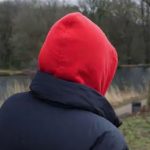A mini manuscript written by novelist Charlotte Bronte when she was 13 will be returned to her home in Yorkshire after being bought for $1.25 million.
The 15-page manuscript, which is smaller than a playing card, contains 10 poems and was the last of more than two dozen of the famous ‘little books’ known to be in private hands.
It has been bought by a British literary charity, Friends of the National Libraries (FNL), after surfacing for the first time in more than a century.
Its buyers have said the manuscript, dated December 1829 and measuring 3.8 x 2.5ins (9.6 x 6.3cm), is “inch for inch, possibly the most valuable literary manuscript ever to be sold”.
The miniature books created by Charlotte Bronte and her siblings as children have long been objects of fascination for Bronte scholars and fans.
The manuscript is stitched in its original brown paper covers and is entitled A Book of Ryhmes (sic) by Charlotte Bronte, Sold by Nobody, and Printed by Herself.
It will now be donated to the Bronte Parsonage Museum in Haworth, Yorkshire, FNL confirmed.
Children’s author Shirley Hughes dies aged 94 after short illness
Original map from Winnie-the-Pooh sells for record-breaking £430,000
Nobel Literature Prize: After the Bob Dylan fiasco, who’s next?
Principal curator of the museum Ann Dinsdale said: “It is always emotional when an item belonging to the Bronte family is returned home and this final little book coming back to the place it was written when it had been thought lost is very special for us.”
She added that she was “absolutely thrilled” by the news.
The Jane Eyre author’s collection of poems is well known in the world of Bronte scholarship and was last seen at auction in 1916 in New York, where it sold for $520.
Its whereabouts and even its survival were unknown until it was unveiled in New York last week.
The titles of the 10 poems – including The Beauty of Nature and On Seeing the Ruins of the Tower of Babel – have long been known, but the poems themselves have never been published, photographed, transcribed or even summarised.
Thrown upon their own resources in Haworth, where their father was curate, the four Bronte children – Charlotte, Anne, Emily and Branwell – evolved a sophisticated imaginary world.
They wrote adventure stories, dramas and verse in hand-made manuscript books filled with tiny handwriting intended to resemble print.






















